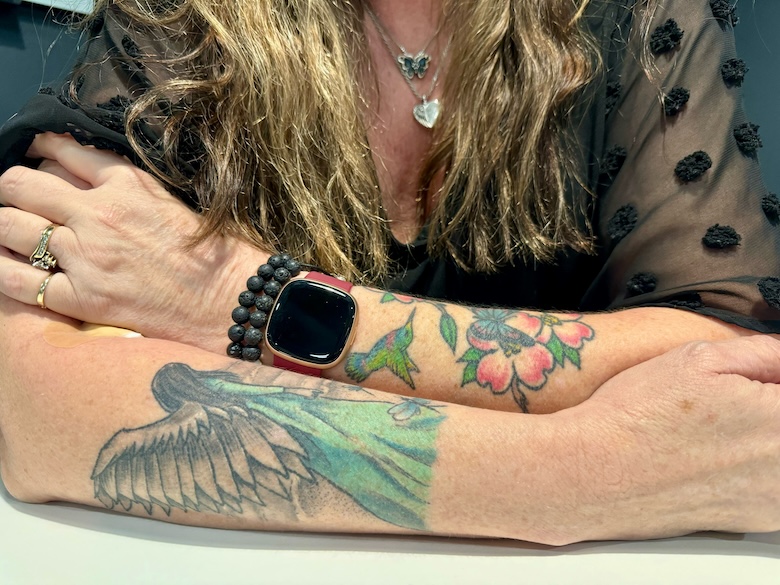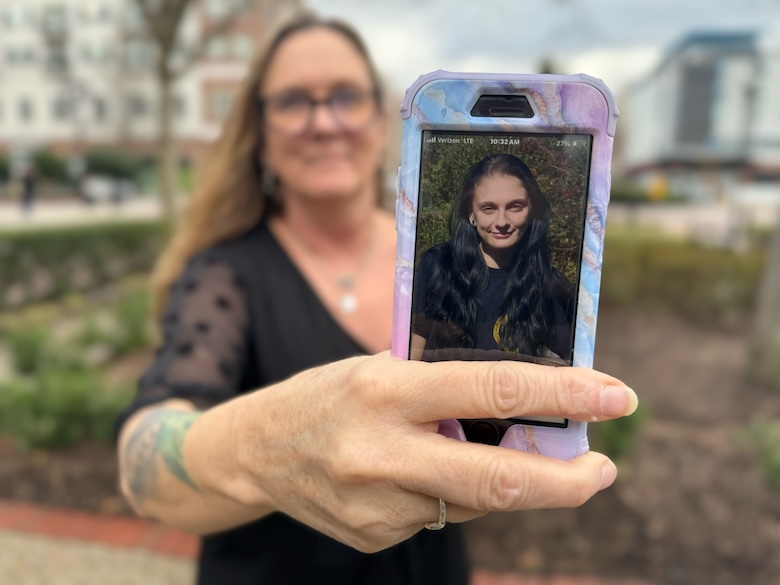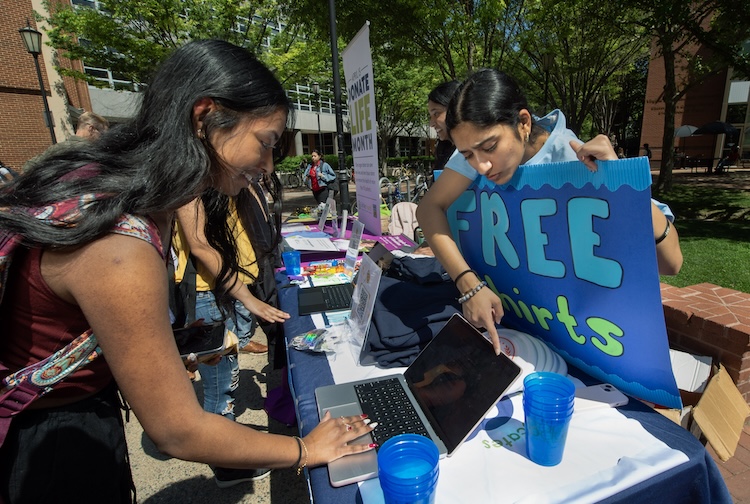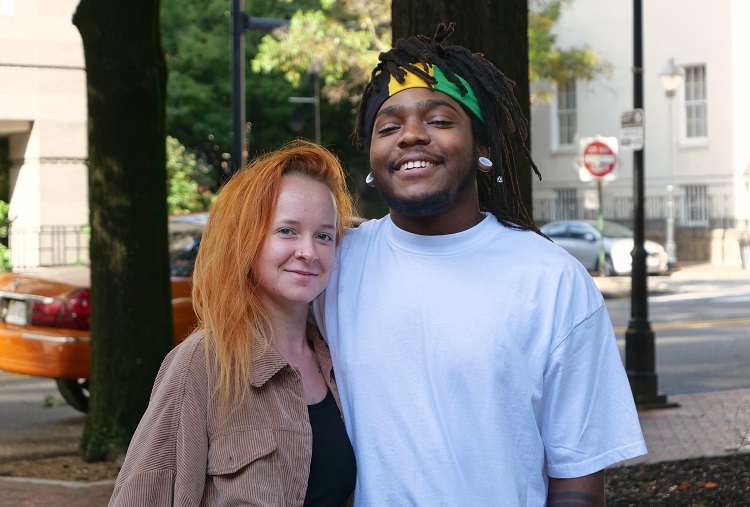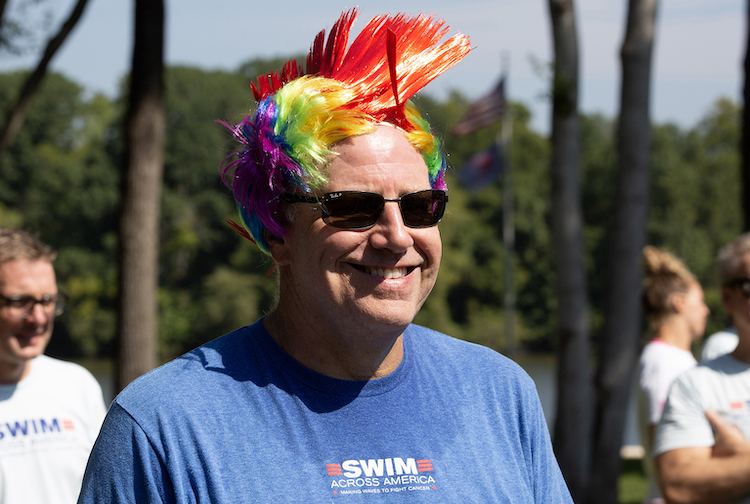
Mother shares her motivations to become a living liver donor
Inspired by her late daughter, Virginia woman saves the life of a stranger with little hope remaining in his battle with liver cancer.
April 08, 2024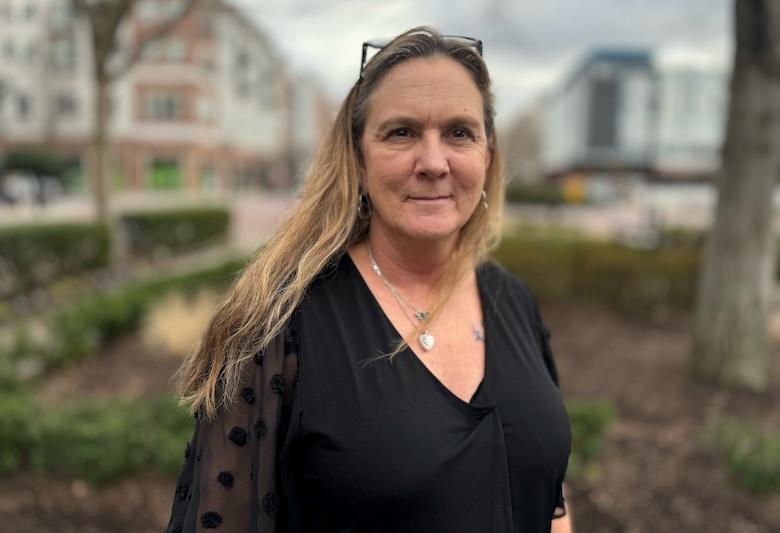 Alicia Banes donated her liver to a stranger she read about in a news story. She recognized the man’s desperate plea for a donor, as her own daughter also struggled to find the right match for a liver transplant. The necklace she’s wearing was made with a portion of Nikki’s ashes. (Contributed by Jeff Kelley)
Alicia Banes donated her liver to a stranger she read about in a news story. She recognized the man’s desperate plea for a donor, as her own daughter also struggled to find the right match for a liver transplant. The necklace she’s wearing was made with a portion of Nikki’s ashes. (Contributed by Jeff Kelley)
By Jeff Kelley
Although donating a portion of your healthy liver is considered a safe procedure, the surgery — like any other — comes with risk.
Yet Alicia Banes did not care: She was going to donate her liver to a stranger in need.
Alicia made that decision in 2022. She saw a news story on Facebook about a Colonial Heights man with cancer who would die in months without a lifesaving liver transplant.
“It was just a calm that came over me,” Alicia recalls when seeing the post. “I was crying. I said to my husband, ‘I’ve got to do this.’ It was God telling me this is the route I had to go, and what I was led to do.”
That calling not only came from her faith, but from the memory of her daughter Nikki, who died in March 2019 just a few weeks shy of her 22nd birthday. Nikki also needed a liver transplant, the result of a rare bile duct-scaring disease called primary sclerosing cholangitis she was diagnosed with at age 13. Despite family members trying, no match was found in time. Nikki died of an esophageal varices rupture while receiving treatment.
Inspired to act quickly after seeing the news story, Alicia called VCU Health Hume-Lee Transplant Center to take the next step to becoming a living donor. The woman on the other end of the line was Teresa Crenshaw, the living donor transplant coordinator who had worked with Nikki and Alicia a few years prior when they were searching for a liver donor.
Donating a liver is ‘what I was led to do’
For patients in need of a lifesaving organ, there are two options: join a waitlist with thousands of others and hope for a matched organ from a deceased donor or find a living donor. Living donors are often family members or friends, but sometimes altruistic strangers, too.
Alicia had never met the man who would receive her liver. That’s by design, and she and the recipient, Rodney Reynolds, only met last year after both agreed to do so.
Alicia began the transplant process over the summer and fall of 2022. Prospective donors undergo a full range of blood tests, lab work and various other tests. Candidates also speak to mental health professionals to ensure they understand the donation process, the risks and to make sure they aren’t doing anything against their will.
Alicia recalls one of the questions from the transplant team: What if you go through with this, and the recipient’s body rejects the organ?
“Even if [his body] rejected it, this wouldn’t be for nothing,” Alicia said.
Alicia Banes has tattoo of an angel and butterfly on her arms to honor the life of her daughter, Nikki, who died while receiving treatment for a rare bile duct-scaring disease. They images are metaphors for rebirth and growth after a difficult time. (Contributed by Jeff Kelley)
Rodney had liver cancer, making him ineligible for the national waitlist due to a shortage of livers from deceased donors. Long-term outcomes aren’t as high for patients with liver cancer, but a cure is possible.
“I can’t imagine what Rodney was going through, knowing it was up to a total stranger to step up and help him,” Alicia added.
But Hume-Lee has a protocol for selected patients with liver cancer that qualifies them for a transplant from a living donor. Still, patients need to find such a willing donor — or caring strangers like Alicia need to step up.
Over the past few years, Hume-Lee has started offering living donor liver transplants as a new and effective treatment for patients with limited liver metastases or cancers that are too large or advanced to be treated with organs from deceased donors.
“We are seeing more cases of living donation for those with liver cancer since we’ve started offering this protocol,” said Vinay Kumaran, M.D., Hume-Lee's living liver surgical director who restarted the living liver donor program in 2019. “Referring physicians are becoming aware that we are taking on patients with more advanced cancer now that we have a good and steady program in place.”
Learn how you can share the gift of life by becoming a living organ donor.
For prospective living donors, a multidisciplinary team reviews each case to determine candidacy before deciding to move forward.
“The transplant team, to their credit, goes through all the risks and even tries to get you to change your mind, which you can do at any point,” Alicia said. “They make sure you are fully on board to go through with a living donation.”
And indeed, Hume-Lee greenlit Alicia to move forward.
Reynolds found out about a month before the surgery that a donor had come forward. He did not know who it was.
“All I could do was cry. I didn’t think it’d ever happen,” said Reynolds, who today has no evidence of disease. “It was a miracle.”
He recalls the time leading up to that moment.
“The last two years before [the] transplant were hell. I was in really bad shape. My liver team put it point-blank to me: my only option was to find a liver, or else.”
He got in touch with Wayne Covil, a longtime news reporter for WTVR-CBS 6, who covered Reynolds’ predicament. That’s the story Alicia saw.
Hume-Lee Transplant Center says ‘yes’ to more patients because of living donors
Through the organ donation process, Alicia saved Reynolds’ life in November 2022. Her surgeon was Kumaran.
“Donors are awesome people to begin with. Even if you’re donating to a family member, it’s still a major operation that they’re willing to do,” Kumaran said, noting how a few patients who have voluntarily donated kidneys have even come back to donate a portion of their liver. “These are wonderful people who are great to work with, and it’s part of the pleasure of the profession that you get to meet people like this.”
Increasing the number of living organ donors can change the health outcomes for many patients hoping for their moment to come on the transplant waitlist. Patients receiving organs from deceased donors are largely limited by geography and must be within a few hours of the transplant center once an organ becomes available. Living donations, on the other hand, are scheduled ahead of time, so living donors and recipients could live a coast apart.
Living donation is also a primary source of growth for Hume-Lee and other transplant centers, and key to truly saving more lives, says David Bruno M.D., F.A.C.S., interim chair and liver transplant surgical director of Hume-Lee.
“If you need an organ and don’t have to go on the national waiting list, you’re at a huge advantage. Our living donor program gives us the ability to continue to say ‘yes’ to more transplant recipients,” Bruno added.
Alicia Banes was motivated to become a living organ donor after her own daughter, Nikki, struggled to find a donor. (Contributed by Jeff Kelley)
As the organ does, Alicia’s liver regenerated back to full size within a few weeks.
“The nurses, the doctors, they are so great at Hume-Lee. They are so sympathetic and grateful,” she said. “People need to understand how easy living donation is. More people would do it. For a little bit of pain, I’d do it all over again.”
And there is another donor in this story: Nikki.
“We gave her body to science. She donated her corneas and gave two people sight,” Alicia said, while wearing a silver heart necklace made with a portion of Nikki’s ashes.
Kenny, Nikki’s stepfather, told Nikki she was an angel sent to Earth to do a job: help others.
“She taught me all about the donor process. She was so strong. She was fearless. I knew the surgery wasn’t without risk, but either I was going to save Rodney or I was going to be reunited with my daughter,” Alicia says. “Nikki was doing God’s work.”

